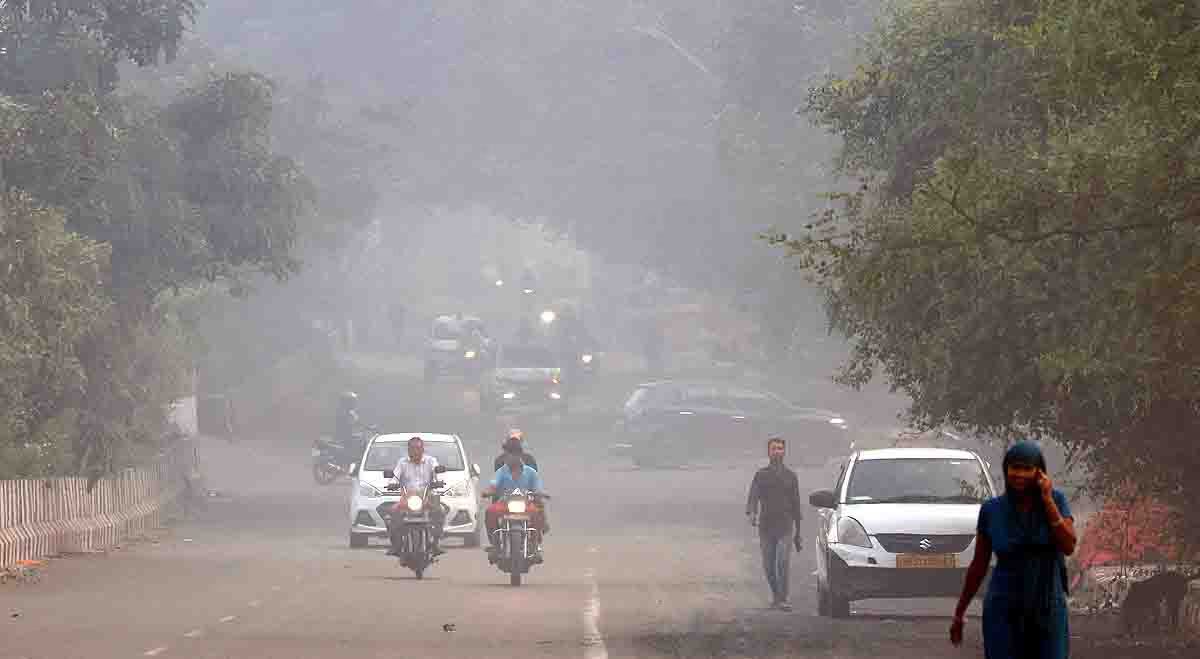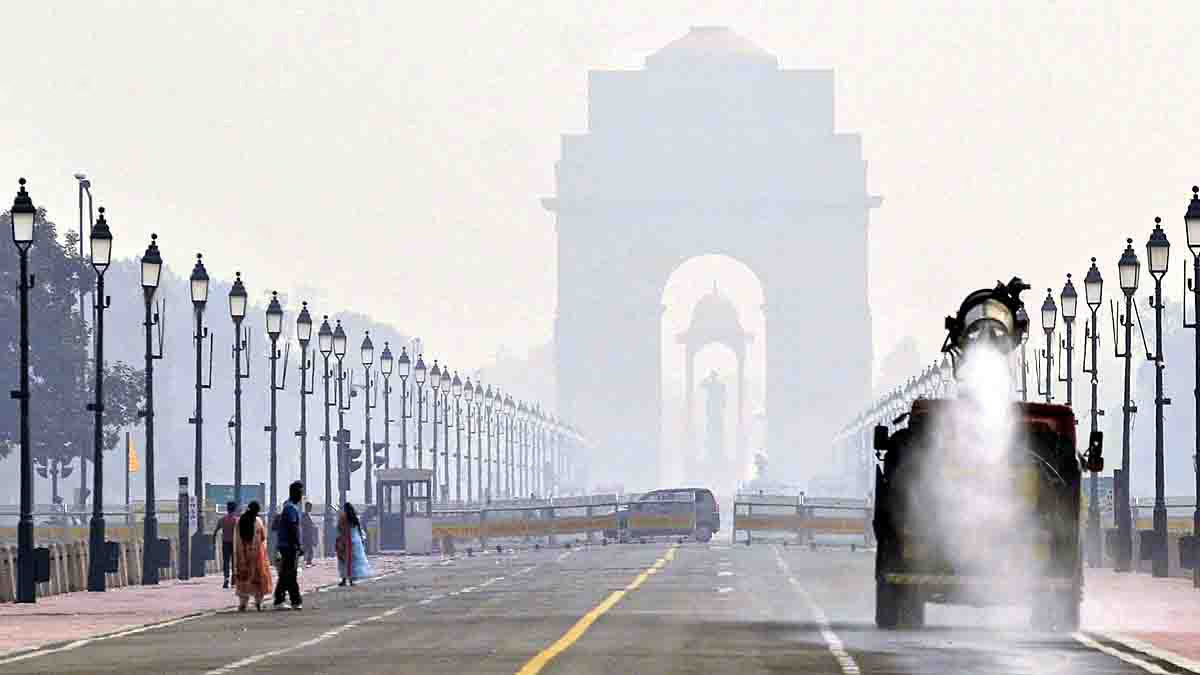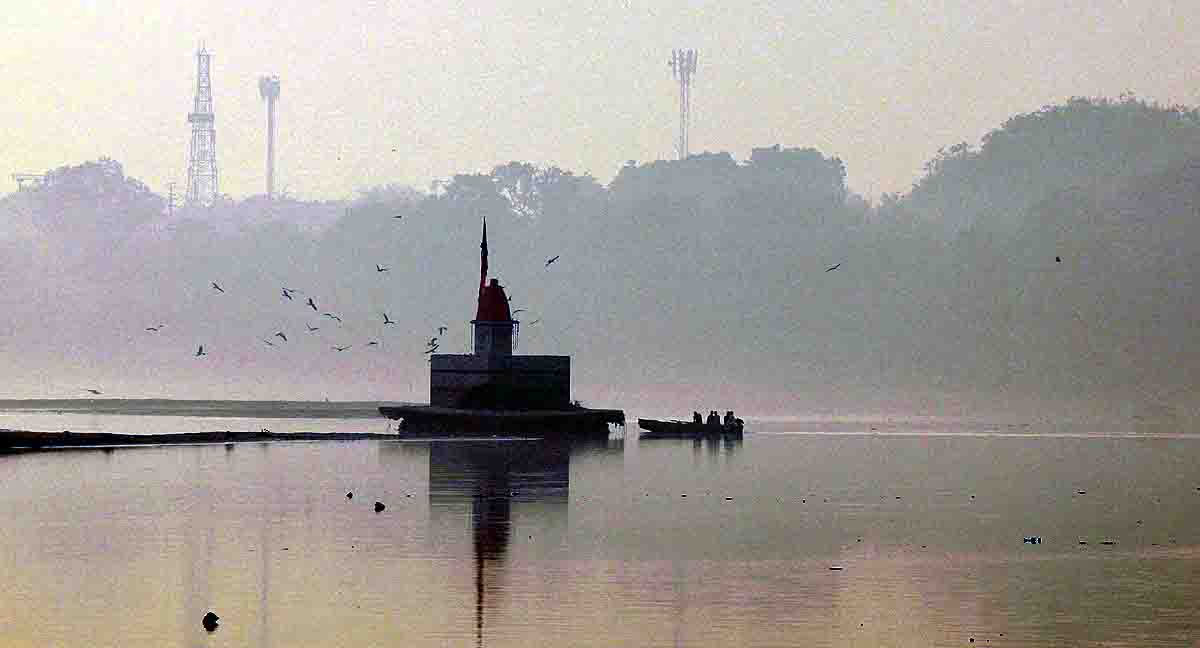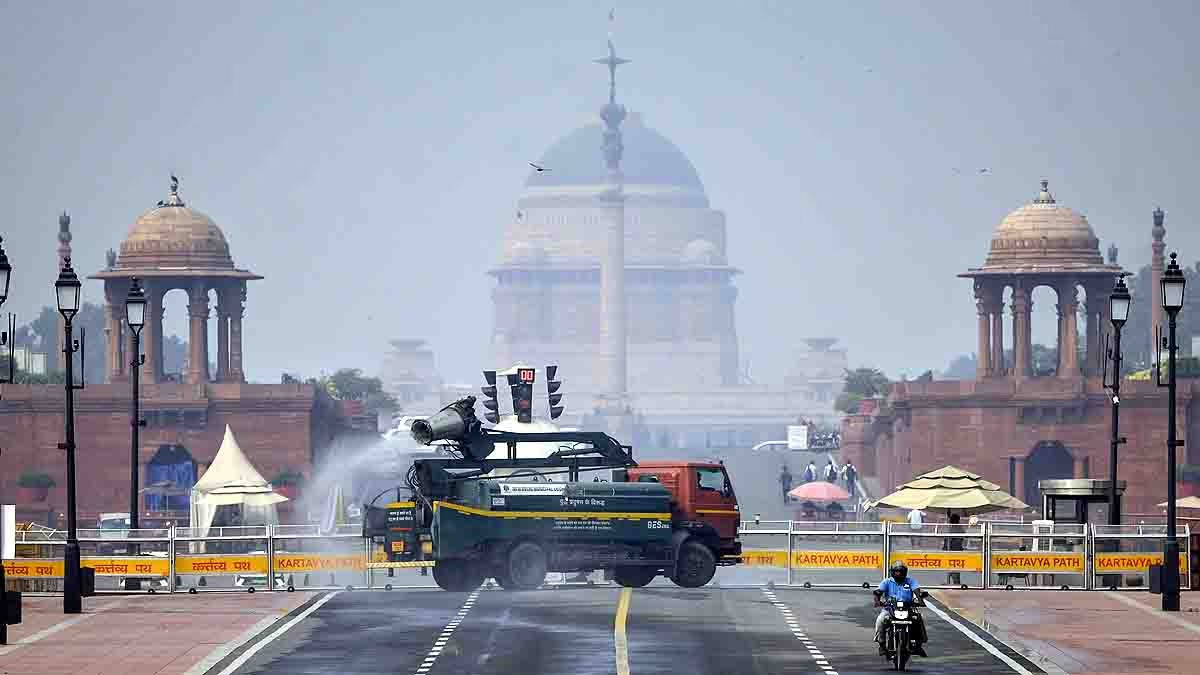The air in Delhi-NCR often becomes so toxic that it's likened to a gas chamber. Breathing becomes difficult, especially in winter. But why is this the case? Are only vehicles and factories to blame? No, certain natural conditions lock the pollution here. Let’s explore how this small area of Delhi becomes a pollution prison.
Delhi-NCR lies in the Indo-Gangetic Plain, a flat area at the foothills of the Himalayas. To the north are the towering peaks of the Himalayas, to the south the Aravalli Hills, and to the east, the Yamuna River – all these together shape Delhi into a bowl. This bowl acts as a trap for pollution.
Read more:
How?
Airborne particles (such as dust or smoke) come from surrounding areas but the hills prevent them from escaping. For instance, smoke from stubble burning in Punjab-Haryana reaches Delhi directly, but the Himalayas prevent it from heading north. The result? Pollution accumulates.

Source: aajtak
Fact:
A study reveals Delhi's geographical position increases pollution by 30-50%, even without local emissions. This bowl becomes more dangerous in winter when wind speed reduces.
The biggest secret is the "temperature inversion." Typically, temperatures drop with increased altitude, but in winter, the reverse happens – cold air settles near the ground, warmer air above. This warm air sits like a "lid" over the cold air, trapping pollution beneath.
Read more:
Simple analogy: Imagine smoke in a room. If the ceiling is closed, smoke can't escape. Similarly, inversion confines pollution to 200-300 meters above the ground.
Why in winter? From December to February, temperatures drop to 10-15°C. Humidity reaches 80%, creating fog that clings to pollution particles.
Figures: Research shows during inversion, PM2.5 levels rise by 45%. In Delhi, the winter mixing height (the air pollution spread height) remains only 200-300 meters versus 1 kilometer in summer.
The WHO's standard for PM2.5 is 5 micrograms/cubic meter annually, but in Delhi, it soars to 100-300 micrograms/cubic meter in winter.

Source: aajtak
Weather also plays a role in locking in pollution. During winter and post-monsoon (October-November), wind speeds drop below 1 meter/second. Without rain, pollution isn't washed away.
Read more:
Stagnation: Scientists call it atmospheric stagnation. In the Indo-Gangetic Plain, there are roughly 101 days a year when the air is stagnant. On these days, PM2.5 levels rise by an additional 45 micrograms/cubic meter.
Humidity and Fog: High humidity (70-80%) consolidates pollution. During monsoon, rain reduces pollution by 20-30%, but not in winter.
Fact: During the Great Smog of November 2017, Delhi's AQI reached 360-823, considered severe. PM10 was 768 micrograms/cubic meter and PM2.5 was 374 micrograms/cubic meter – 5-14 times above safe limits (100 and 60).

Source: aajtak
Nature Communications (2024): The Stagnation Index indicates winter stagnation will increase by 1 day per degree of global warming, boosting PM2.5 by 7 micrograms/cubic meter.
PMC Study (2022): In 8 Delhi areas, PM2.5 in the northwest was 106 micrograms/cubic meter, while monsoons saw a 20% drop. Inversion and low wind doubled winter pollution.
EHP Journal (2018): The November 2017 smog recorded PM2.5 levels at 999 micrograms/cubic meter, tripled in traffic zones.
Reading University (2025): The Aravalli and Himalayas trapped pollution into a bowl, with winter AQI over 400.
These studies show pollution isn't just a local problem but is intertwined with weather and geography.




